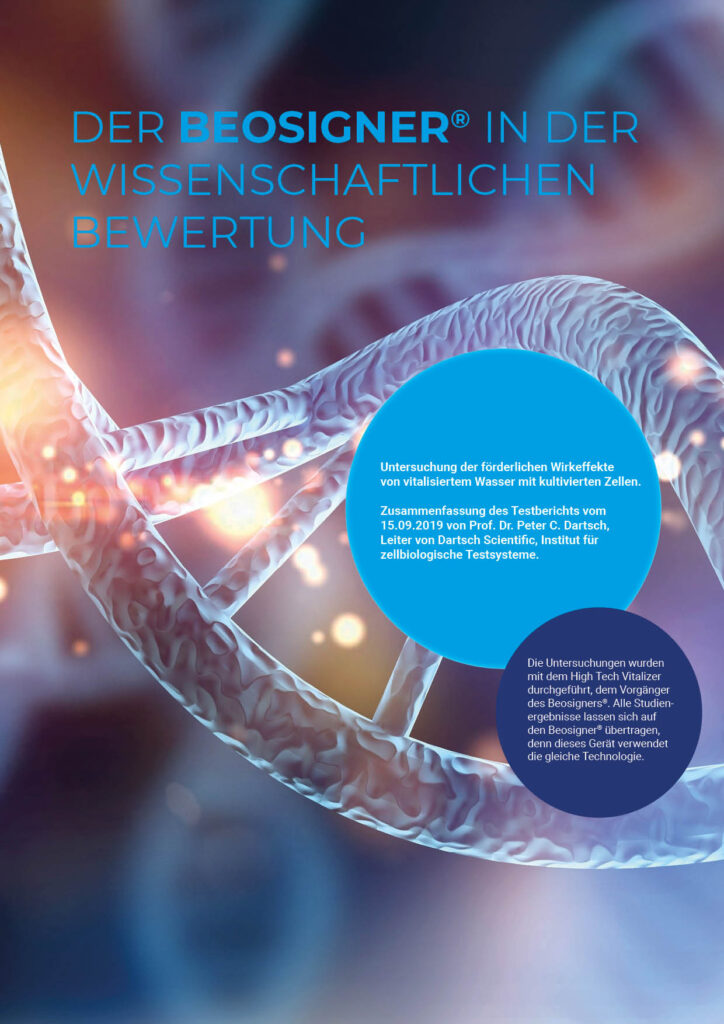Biophotons:
Control centers
in our body
Biophotons as Information carriers
In a living organism, cells communicate with each other. Biophysicist Prof. Dr. Fritz-Albert Popp developed this theory back in the 1970s. He was able to prove that all organic tissue emits a weak light. While the light radiation in living cells only decreased very slowly, it decreased rapidly in dying cells and disappeared completely after cell death.
Cells of an organism absorb photons from the outside – light particles – for example from sunlight. However, cells can also produce photons themselves.
Popp used the term biophotons (bio(s), greek for life) for these light particles. According to his theory, they are partly responsible for life in every organism: cells produce biophotons, emit them and use them to communicate throughout the organism. They control and regulate processes. In other words, they activate or balance, coordinate and organize.
Biophotons are information carriers. They stimulate processes in the body or make them possible in the first place; in humans, animals and plants. This shows you how important these tiny particles are for our lives and our well-being.
Why biophotons?
We know that biophotons are essential for life. We also know that we (and all other living organisms) need a certain, undefined number of them in our cells. That's not all though – the decisive factor is that biophotons are coherent light. This enables them to transport relevant information within the entire organism.
They are basically a means of transportation and not an end in themselves. We therefore need a sufficient quantity of biophotons with the right information in our cells.
Light, biophotons, information, function, a classification
Compare an organism with a company. Without a lively exchange of information, nothing works. It is simply impossible to maintain a construct if, for example, people, machines or even cells do not communicate with each other. Let's take the comparison a step further to make it easier to classify the terms: there are people, systems and processes in a company. Employees exchange information in meetings or by email and pass it on – as carriers of information. This produces results. If we compare the company with our human body, then the following pairings are opposite each other:
This comparison clearly demonstrates that biophotons are of fundamental importance to us. And there is a branch of information medicine that deals precisely with this: biophotonics research.
Vitality thanks to biophotons
An organism needs the right amount of biophotons and information to function smoothly. What happens if neither is available? Correct, there is less exchange of important information. This leads to disruptions in the regulatory processes and therefore to less vitality. As a human being, you might say "I feel ill", "I can't concentrate properly" or "I'm totally exhausted". This is the opposite of what most of us want. And also the opposite of what is good for animals and plants. So let's strengthen our energy metabolism.
Study on basal Energy metabolism
Know what is possible. Experiencing what is possible. For an "I feel good", an "I feel fit" and an "I feel on top of the world". This is possible with the help of biophotons. This is also shown by the results of a study conducted by Dartsch Scientific, Institute for Cell Biology Test Systems*. Study director Prof. Dr. Peter C. Dartsch was able to prove in vitro that water vitalized with our technology has a significant effect on increasing the basal energy metabolism of cultivated connective tissue fibroblasts.
*This study was carried out by Dartsch Scientific, Institute for Cell Biology Test Systems in 2019 using the High Tech Vitalizer, the predecessor of the Beosigner®. The results can be transferred 1:1 to the Beosigner®. The Beosigner® also offers a comprehensive concept, but the biophoton technology is basically the same in both devices.
